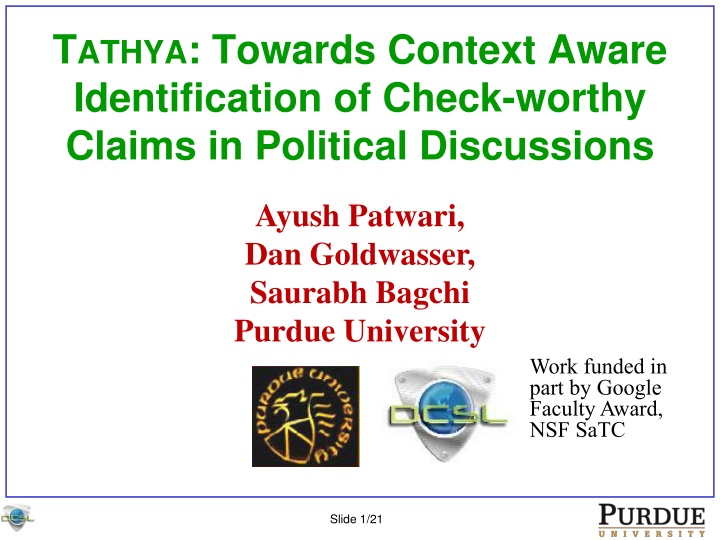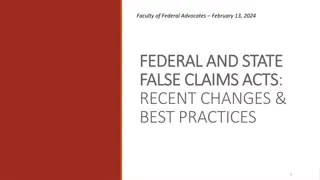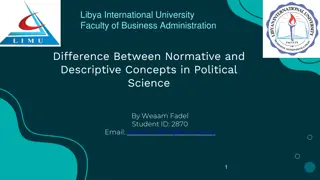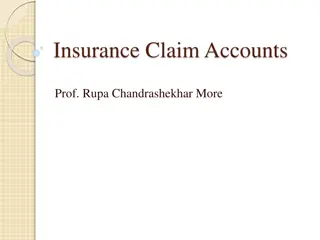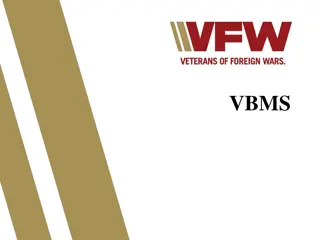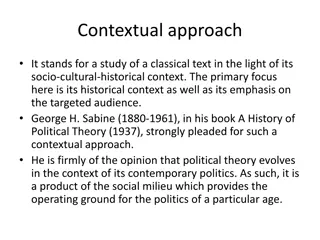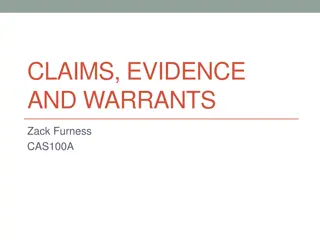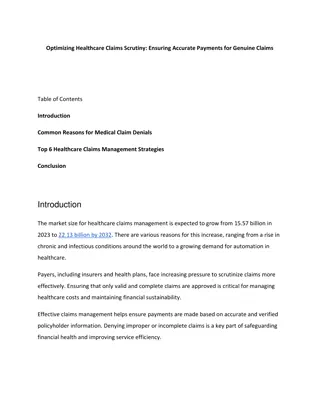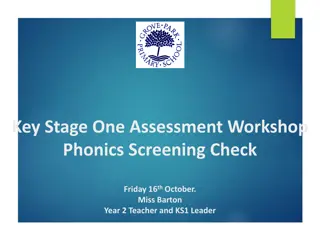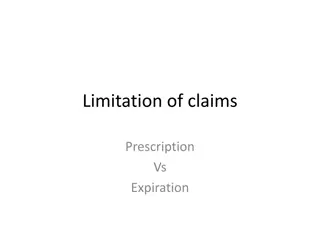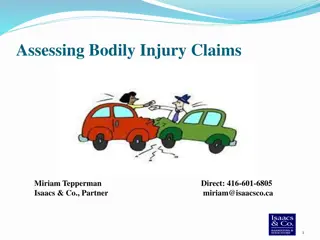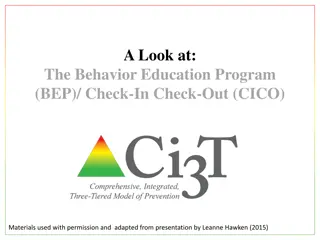Context-Aware Identification of Check-worthy Claims in Political Discussions
This work explores the intersection of man and machine in countering malicious communication in social networks, focusing on fact-checking in political discussions. The research investigates the need for technology to verify the accuracy of public figures' statements, considering the thriving field of fact-checking due to the prevalence of false or misleading information. Automated fact-checking is vital to keep up with the speed and volume of news cycles and diverse sources of information dissemination.
Download Presentation

Please find below an Image/Link to download the presentation.
The content on the website is provided AS IS for your information and personal use only. It may not be sold, licensed, or shared on other websites without obtaining consent from the author.If you encounter any issues during the download, it is possible that the publisher has removed the file from their server.
You are allowed to download the files provided on this website for personal or commercial use, subject to the condition that they are used lawfully. All files are the property of their respective owners.
The content on the website is provided AS IS for your information and personal use only. It may not be sold, licensed, or shared on other websites without obtaining consent from the author.
E N D
Presentation Transcript
TATHYA: Towards Context Aware Identification of Check-worthy Claims in Political Discussions Ayush Patwari, Dan Goldwasser, Saurabh Bagchi Purdue University Work funded in part by Google Faculty Award, NSF SaTC Slide 1/21
How this Work Came About? We were interested in the topic of man and machine to counter malicious communication in social networks Example problem: Fake reviews on social sites Basic intuition: Humans and machines possess complementary capabilities in identifying fake or malicious communication Example: Machines can rapidly process large numbers of reviews by evaluating features (e.g., word choice, sentence structure, history of contributor s account, etc.) Humans are slower but can evaluate features that require genuine human understanding (e.g., bias, plausibility, factual contradictions, etc.) Work got funded by Google in late 2015 But then we looked around and found the problem had recently been solved So we turned in mid 2016 to another problem that needed man and machine working together: Fact Checking Slide 2/21
Why Fact Checking? Public figures such as politicians make claims about "facts" all the time They may be false, exaggerated or misleading, due to careless mistakes and even deliberate manipulation With technology, information is spread faster through all types of channels Can we use technology to check the veracity of factual claims important to the public? Fact checking is thriving: # organizations: 44 (2014) 115 (Today) Slide 3/21
Who is Doing Fact Checking Today? Regular journalistic outfits Non-traditional journalistic outfits Slide 4/21
Why Automated Fact Checking? Speed and volume of news cycle means purely manual fact checking is challenging Time it takes you to read this slide, a software program will have read and parsed our 10 page paper on the topic Desire for real-time fact checking or within minutes before viral spread of fake news Competitive advantage for fact checking organizations Proliferation of sources for spread of news Print media, Online media, Campaign advertising, Social media Slide 5/21
Nominal Pipeline for Automated Fact Checking Spot check- worthy claims Check claims Curate & publish Monitor Duplicate? Print Media Online Media Monitor Maturity & Availability Advertising Social Media Slide 6/21
Focus of This Talk Spot check- worthy claims Check claims Curate & publish Monitor Duplicate? Ayush Patwari, Naman Patwari, Dan Goldwasser, Saurabh Bagchi, TATHYA: Towards Context Aware Identification of Check-worthy Claims in Political Discussions, CoNLL, pp. 1-10, 2017. Ayush Patwari, Dan Goldwasser, Saurabh Bagchi, Tathya: A Multi-Classifier System for Detecting Check-Worthy Statements in Political Debates, Under submission to CIKM (Short paper category), pp. 1-4, 2017. Slide 7/21
Hardness of Determining Check-worthiness Checkable? Factual statement, not opinion? Unambiguous? Checkable Check- worthy Check-worthy? Lot more subjective Relies on prior stand of speaker Relies on context of statement in current political discourse Competitive factors of fact-checking organization Bias of fact-checking organization Slide 8/21
Checkable and Check-worthy: Examples SANDERS: When this campaign began, I said that we got to end the starvation minimum wage of $7.25, raise it to $15. SANDERS: I think we have got to be clear, not equivocate, $15 in minimum wage in 50 states in this country as soon as possible. Same debate Not check-worthy Check-worthy Slide 9/21
Checkable and Check-worthy: Examples O MALLEY: Senator Sanders voted against the Brady Bill CLINTON: I have been for the Brady bill, I have been against assault weapons Different debates Not check-worthy Check-worthy Slide 10/21
Current State-of-Art Supervised classification algorithm: ClaimSpotter (*) Labeled training set generated by non-expert human annotators from 30 debate episodes, 2004-12 Sentences spoken by 18 presidential candidates: total of 20,788 sentences Annotators could use up to 5 previous sentences for context Support Vector Machine (SVM) classification into 2 classes: check-worthy and (not checkable + checkable but not check- worthy) Best performance from using features: Bag-of-words (unigram), Part-of- speech, Entity type Precision: 70%, Recall: 72%, F-measure: 70% (*) Naeemul Hassan, Chengkai Li, and Mark Tremayne. "Detecting check-worthy factual claims in presidential debates." 24th ACM CIKM, pp. 1835-1838, 2015. Naeemul Hassan, et al., ClaimBuster: The First ever End-to-end Factchecking System, VLDB (demo), pp. 1-4, 2017. Slide 11/21
Our Thought: First Let Us Replicate Results Dataset: 15 primary Presidential debates from 2015-16 (7 Republican, 8 Democratic); 3 Presidential debates Statement labeled check-worthy if any of 8 national fact- checking organizations checked it Dataset size: 21,700 statements; 1,085 marked check-worthy After pruning: 15,735 statements; 1,085 marked check-worthy (6.1%) Reported Results: P = 70% R = 72% F = 70% Primary Debates P 19.4% Presidential Debates P R 22.6% 14.8% R 32.0% F 24.1% F 17.9% Claim- Spotter Slide 12/21
Bring In Context What if we could bring context into the picture? What if we could bring topic modeling into the picture? Context: Rather than consider individual sentences, use chunk and use context around it as features Definition: Named Entity Recognition (NER) labels sequences of words in a text which are the names of things, such as (Person, Organization, Location) Named entity in current chunk is it used in support or opposition in previous X chunks how frequently is it used Slide 13/21
Bring in Topics Topics: Claims in certain topics (e.g., gun control) are more likely to be checked by fact-checkers as compared to those on personal life Definition: LDA represents documents as mixtures of topics and each topic spits out words with certain probabilities LDA topic model with user-defined number of topics 20 topics were found to be enough Change of topics: Could indicate evasion and repeated change could mean persistent desire to pin down speaker Cosine similarity of topic distribution with X/2 previous and X/2 following chunks Slide 14/21
Bring in Text Normalization It is common to refer to entities using second and third person pronouns in a discussion This information is lost when analyzing a statement out- of-context We perform text normalization by propagating chained named entities along a discussion Example: Yes look, I have made it clear based on Senator Sanders own record that he has voted with the NRA, with the gun lobby numerous times. He voted for immunity from gunmakers and sellers which the NRA said, was the most important piece of gun legislation in 20 years. Who is he? Slide 15/21
Quiz The following are 20 statements made by our Presidential candidates during the Primary Debates in 2016 The statement to consider is in blue; the rest of the text provides context For each statement, determine if the statement is: Check-worthy Not check-worthy Ground truth will come from if the statement was checked by any of 9 reputed fact-checking organizations: Washington Post, Factcheck.org, Politifact, PBS, CNN, NYTimes, Fox News, USA Today If you determine that a statement is check-worthy, indicate on the following scale the result of the check: True, Mostly true, Partly true-partly false, Mostly false, False Slide 16/21
TATHYA: Putting It All Together SVM classifier that does binary classification: Check- worthy and (Not checkable OR Checkable but not check- worthy) Best result is obtained with the following feature sets: Bag-of-words, POS, Entity recognition, POS tuples, Context Primary Debates P 19.4% Presidential Debates P R 22.6% 14.8% R 32.0% F 24.1% F 17.9% Claim- Spotter TATHYA 19.3% 43.5% 26.3% 22.7% 19.4% 20.9% Slide 17/21
Sources of Error False positives: For 1/3 of the case, the model was wrong for remaining, we could not objectively decide why they had not been checked In discussion we found that these were driven by pragmatic factors Manual examination of sampled missed statements 1. Sentence context not captured sufficiently: 21.6% 2. Implication was checked: 8.1% 3. Unit of checking was subjective: 10.8% 4. Poorly structured sentences: 10.8% 5. Model simply wrong: 46.8% Slide 18/21
Error Examples SANDERS: I am going to release all of the transcripts of the speeches that I gave on Wall Street behind closed doors, not for $225,000, not for $2,000, not for two cents. TATHYA: Check-worthy ClaimSpotter: Check-worthy Reality: Not check-worthy CLINTON: ...and stood with the Minutemen vigilantes in their ridiculous, absurd efforts to, quote, "hunt down immigrants. TATHYA: Not Check-worthy ClaimSpotter: Not Check-worthy Reality: Check-worthy Slide 19/21
Take-Aways We tackle the problem of detecting whether political statements are check-worthy or not This is the first step in automating fact-checking We find that this problem is made difficult by: fact-checkers subjectivity, understanding dynamics of discussion and incorporating world knowledge Our error analysis lays groundwork for further challenges in learning to automate fact-checking Our work: TATHYA Focuses on exploiting the semantic context and debate dynamics. Uses a set of different classes of features bag-of-words, topic agreement, entity history and targeted part-of-speech tuples, reference resolution Our best result for the classifier is an F1-score of 26.3%, only Recall, arguably the more important metric for computational journalism, provides a better performance with a value of 43.5% Slide 20/21
Resources Reporters Lab (Duke University) https://reporterslab.org/fact-checking/ NPR, September 27, 2016 Do Fact Checks Matter? ClaimBuster (UT Arlington) http://idir-server2.uta.edu/claimbuster/ Flynn, D. J., Brendan Nyhan, and Jason Reifler. "The nature and origins of misperceptions: Understanding false and unsupported beliefs about politics." Political Psychology 38, no. S1 (2017): 127-150. Slide 21/21
